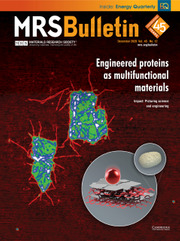Crossref Citations
This article has been cited by the following publications. This list is generated based on data provided by
Crossref.
Meunier, Vincent
and
Sumpter, Bobby G
2007.
Tuning the conductance of carbon nanotubes with encapsulated molecules.
Nanotechnology,
Vol. 18,
Issue. 42,
p.
424032.
Chen, L. Y.
and
Horing, N. J. M.
2007.
An exact formulation of hyperdynamics simulations.
The Journal of Chemical Physics,
Vol. 126,
Issue. 22,
Skylaris, Chris-Kriton
Haynes, Peter D
Mostofi, Arash A
and
Payne, Mike C
2008.
Recent progress in linear-scaling density functional calculations with plane waves and pseudopotentials: the ONETEP code.
Journal of Physics: Condensed Matter,
Vol. 20,
Issue. 6,
p.
064209.
Singh-Miller, Nicholas E.
and
Marzari, Nicola
2009.
Surface energies, work functions, and surface relaxations of low-index metallic surfaces from first principles.
Physical Review B,
Vol. 80,
Issue. 23,
Giannozzi, Paolo
Baroni, Stefano
Bonini, Nicola
Calandra, Matteo
Car, Roberto
Cavazzoni, Carlo
Ceresoli, Davide
Chiarotti, Guido L
Cococcioni, Matteo
Dabo, Ismaila
Dal Corso, Andrea
de Gironcoli, Stefano
Fabris, Stefano
Fratesi, Guido
Gebauer, Ralph
Gerstmann, Uwe
Gougoussis, Christos
Kokalj, Anton
Lazzeri, Michele
Martin-Samos, Layla
Marzari, Nicola
Mauri, Francesco
Mazzarello, Riccardo
Paolini, Stefano
Pasquarello, Alfredo
Paulatto, Lorenzo
Sbraccia, Carlo
Scandolo, Sandro
Sclauzero, Gabriele
Seitsonen, Ari P
Smogunov, Alexander
Umari, Paolo
and
Wentzcovitch, Renata M
2009.
QUANTUM ESPRESSO: a modular and open-source software project for quantum simulations of materials.
Journal of Physics: Condensed Matter,
Vol. 21,
Issue. 39,
p.
395502.
Hill, Quintin
and
Skylaris, Chris-Kriton
2009.
Including dispersion interactions in the ONETEP program for linear-scaling density functional theory calculations.
Proceedings of the Royal Society A: Mathematical, Physical and Engineering Sciences,
Vol. 465,
Issue. 2103,
p.
669.
Wang, Lin-Wang
2010.
Novel Computational Methods for Nanostructure Electronic Structure Calculations.
Annual Review of Physical Chemistry,
Vol. 61,
Issue. 1,
p.
19.
Baroni, Stefano
Gebauer, Ralph
Bariş Malcioğlu, O
Saad, Yousef
Umari, Paolo
and
Xian, Jiawei
2010.
Harnessing molecular excited states with Lanczos chains.
Journal of Physics: Condensed Matter,
Vol. 22,
Issue. 7,
p.
074204.
Milman, V.
Refson, K.
Clark, S.J.
Pickard, C.J.
Yates, J.R.
Gao, S.-P.
Hasnip, P.J.
Probert, M.I.J.
Perlov, A.
and
Segall, M.D.
2010.
Electron and vibrational spectroscopies using DFT, plane waves and pseudopotentials: CASTEP implementation.
Journal of Molecular Structure: THEOCHEM,
Vol. 954,
Issue. 1-3,
p.
22.
Kwon, Kideok D.
Refson, Keith
and
Sposito, Garrison
2010.
Surface complexation of Pb(II) by hexagonal birnessite nanoparticles.
Geochimica et Cosmochimica Acta,
Vol. 74,
Issue. 23,
p.
6731.
2011.
Self‐Assembly and Nanotechnology Systems.
p.
429.
Ratcliff, Laura
2013.
Optical Absorption Spectra Calculated Using Linear-Scaling Density-Functional Theory.
p.
1.
Nashed, Ramy
Ismail, Yehea
and
Allam, Nageh K.
2013.
Recent advances in the use of density functional theory to design efficient solar energy-based renewable systems.
Journal of Renewable and Sustainable Energy,
Vol. 5,
Issue. 2,
Strachan, Alejandro
Mahadevan, Sankaran
Hombal, Vadiraj
and
Sun, Lin
2013.
Functional derivatives for uncertainty quantification and error estimation and reduction via optimal high-fidelity simulations.
Modelling and Simulation in Materials Science and Engineering,
Vol. 21,
Issue. 6,
p.
065009.
Corsetti, Fabiano
2014.
The orbital minimization method for electronic structure calculations with finite-range atomic basis sets.
Computer Physics Communications,
Vol. 185,
Issue. 3,
p.
873.
Corsetti, Fabiano
and
Roccatano, Danilo
2014.
Performance Analysis of Electronic Structure Codes on HPC Systems: A Case Study of SIESTA.
PLoS ONE,
Vol. 9,
Issue. 4,
p.
e95390.
Weymuth, Thomas
and
Reiher, Markus
2014.
Inverse quantum chemistry: Concepts and strategies for rational compound design.
International Journal of Quantum Chemistry,
Vol. 114,
Issue. 13,
p.
823.
Borghi, Giovanni
Park, Cheol-Hwan
Nguyen, Ngoc Linh
Ferretti, Andrea
and
Marzari, Nicola
2015.
Variational minimization of orbital-density-dependent functionals.
Physical Review B,
Vol. 91,
Issue. 15,
Vaucher, Alain C.
and
Reiher, Markus
2016.
Molecular Propensity as a Driver for Explorative Reactivity Studies.
Journal of Chemical Information and Modeling,
Vol. 56,
Issue. 8,
p.
1470.
Matrane, I.
Mazroui, M.
Ferrando, R.
Badawi, M.
and
Lebègue, S.
2019.
Adsorption and diffusion of Pt, Cu, Ag and Au on missing row reconstructed Pt(110) surfaces: An ab initio investigation.
Surface Science,
Vol. 690,
Issue. ,
p.
121463.




